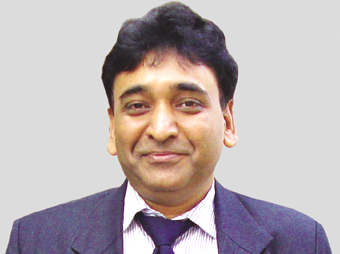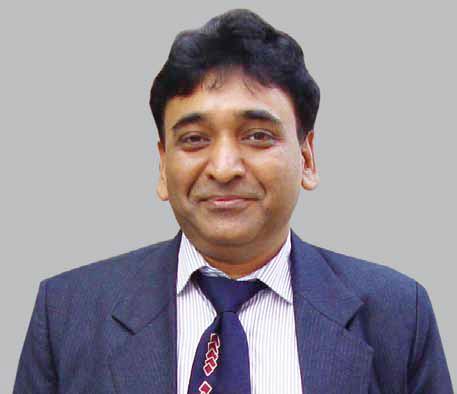
From a macro perspective of State, increasing revenues and decreasing spending on non-development works can generate surplus budget which can lead to better infrastructure, and all consequential benefits
Rajesh Aggarwal, Secretary, Department of Information Technology, Government of Maharashtra
Before we start “computerising” any activity, the first question we must ask ourselves is – should the Government be doing this activity at all. If we can rise above our narrow department view, and take a macro view, or think from taxpayer’s point of view the answers in many cases would be no. Experiments with eOffice have often failed- because government can never be truly paperless. Where the workflow is simple and repetitive, like grant of passport or driving license, in those cases digital and paperless processes are feasible. But where files/papers move to multiple departments or desks and in random ways, eOffice concept usually comes a cropper. HR or employee related matters like recruitments, salary payments, increments, transfers and postings, and loan advances, biometric attendance system and so on are quite easily to implement, and usually increase internal efficiencies, increase transparency, and boost morale of sincere employees. Training of employees now called capacity building is very important for success of any IT initiative.

‘Money Comes, Money Goes’ IT Projects
On the ‘money comes’ or revenue side, the approach should be to focus on 20 percent revenue generating departments contributing 80 percent of the revenues. These typically include sales tax, property registrations, transport and excise, Court Fees etc. In Maharashtra entire Sales Tax (VAT) collection of more than Rupees 40000 crore annually comes from e-Filing and net banking. Use of business intelligence tools and electronic cross verification with other databases especially for octroi, toll nakas, electricity bills, customs and cargo, income tax etc can result in more revenue increase rather than a series of raids by inspectors.
In excise, 80 percent leakage happens from distilleries to wholesalers, and if we focus on that one aspect, the approach can result in quick IT project yielding substantial returns.

Similarly, many states are dabbling in RFIDs and barcodes on cartons/bottles with varying degrees of success. In property registration, computerisation has already helped in quicker, cleaner documents in many states. Experiments
like registration from anywhere in district as being done in Karnataka, rather than being tied to one registration office can lead to bribes coming down, as people will go to a place of their choice where things are cheaper, faster, courteous.
In court fees, Maharashtra has amended its Act to allow online payment. Karnataka is trying to link court system to land records system, to have clear titling system. In other revenue generating departments, citizens should be offered more payment options at more locations. Do not insist on treasury bank challans, which is one of the most inefficient ways. Most utility bills such as electricity, water, landline and mobile phone bills etc can now be paid at Citizen Service centres, or even online. Karnataka has allowed people to pay traffic challan fee at such centres, rather than going to police station.
On the ‘money goes’ or expenditure side, biggest expenditure for the government is salaries. Hence, biometric Attendance or UID can bring down bogus salary payments by 10-20 percent at least. Same goes for pensioners’ salaries,
and schemes like old age pension scheme, and schemes like scholarship or tuition fees reimbursements to students primarily by social justice, tribal and minorities departments etc.
eScholarship schemes in Andhra and Maharashtra are saving hundreds of crores of rupees every year, and the kids are happy because they do not have to run around college clerks, and get money directly into their bank accounts. A key factor in these projects is replacing cash/cheque receipts or payments by online payments via net banking, debit/credit cards etc or direct bank transfer rather than cash/cheque/ money order. The mode of direct bank transfer is much more important than any other IT initiative, and is absolutely transformative as it can eliminate all middlemen in one stroke!
Direct Bank Transfers are useful when all the poor people have bank accounts, and can withdraw money easily. Even though bank branches do not exist in every village, ATMs are now increasingly used.
De-Duping Databases
De-Duping databases can result in dramatic results. In Maharashtra, social justice department has taken the initiative and asked kids to open bank accounts in nationalised banks having core banking facility, preferably with SMS alert. This resulted in savings of hundreds of crore of rupees per annum, because bogus students could not open bank accounts. UID can further trim down numbers. Recently in Maharashtra, a special drive was conducted across the state simultaneously, to find actual number of kids going to schools. Results are dramatic, and savings will translate to bogus
teachers being weeded out, fee reimbursement coming down, mid-day meal, school uniform and books bill coming down, and so on.
In old age pension scheme, or other individual beneficiary schemes, use of Banking channels and computerised lists makes selection and approval process transparent, makes money flow faster and plugs leakages, and saves tremendous money to the tune of nearly 20-30 percent by weeding out bogus and duplicate names. Use of UID numbers will go a long way in de-duping all databases such as voter lists, ration cards, driving licenses, old age pensioners, bogus employees, and bogus students and so on. Even physical assets like buildings and roads need de-duping! We usually see same road or building being shown as constructed or repaired from multiple sources of funding. Putting Latitude-Longitude GPS coordinates also known as geo-stamping and a time-stamped photograph in common data depository can
show all such mal-practices. Many Municipal Corporations are putting such systems in place.
Security Related Projects
With petty crime, social crime, cybercrime, riots and terrorist acts on the increase, use of IT for security related projects falls in a separate but important category. Judicial system i.e. courts, jails, home departments at centre and states, police, anti-terrorism squads etc are becoming IT savvy, sharing lots of databases amongst themselves. As such projects increase, we will also see rise in concern amongst citizens about invasion of privacy etc.
Reflect on the need to computerise
In government departments, before we start ‘computerising’ any activity, the first question we must ask ourselves is – should the Government be doing this activity at all. The effective way to utilise IT in government is when we can rise above our narrow department view, and take a macro view, or think from taxpayer’s point of view. Do some dispassionate analysis, explore if similar project exist in developed countries. Be aware of vendor driven projects as some estimate that more than two third IT projects are vendor driven, and do not really benefit the citizens. A large number of such projects go nowhere after initial hardware purchases. According to National Institute of Smart Governance (NISG) 35 percent eGov projects fail, 50 percent succeed partially, and only 15 percent succeed fully. So, realize and commit that you will keep the citizen at the focus, and then conceptualise the IT Project.
Be a part of Elets Collaborative Initiatives. Join Us for Upcoming Events and explore business opportunities. Like us on Facebook , connect with us on LinkedIn and follow us on Twitter, Instagram.












